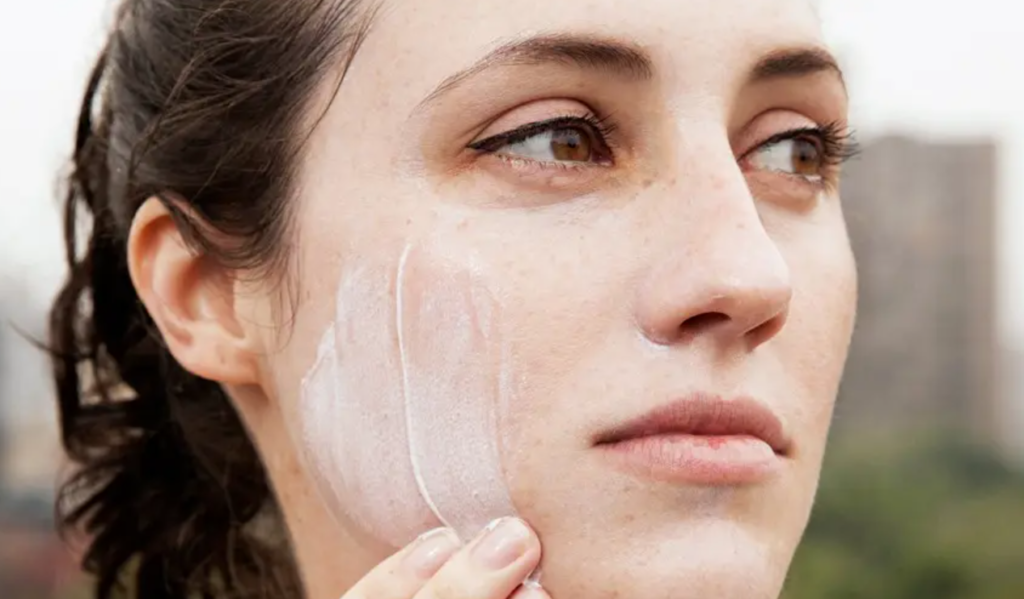If there’s one product that should be a mainstay in your beauty arsenal, it’s sunscreen. Come rain, come shine, this skincare essential acts as your armour against premature ageing and pigmentation, among other skin concerns, delivering broad-spectrum protection against the sun’s UVA and UVB rays.

As you scroll further, brace yourself for a complete lowdown on sunscreens, its variants, when and how often to apply it, the nomenclature associated with its usage, and most importantly, its benefits for your skin health.
Types of Sunscreen
Being the beauty Holy Grail, it’s imperative that you know the different variants of sunscreen available in the market. Distinguished based on how they block ultraviolet rays, buy sunscreen that can be categorised as physical and chemical; physical sunscreens reflect UV rays, while chemical sunscreens absorb UV rays and transform them into heat.
More heavyweight when compared to their counterpart, physical sunscreens are also known to leave a white residue on your skin upon application. However, both variants must be reapplied every two hours to ensure optimal protection against sun exposure.
When to Apply Sunscreen—and How Often?
The answer is simple: 365 days a year. Believe it or not, UVA rays can penetrate through your windows, making it essential to slather the formulation onto your skin even while lounging indoors. During the muggy monsoons, reach out for a water-resistant variant that stays put even if you’re caught in a downpour. Ideally, you must reapply your sunscreen every 2-3 hours, and if you’re swimming or sweating, as often as required.
Decoding the Label
Making your pick can be overwhelming when met with beauty jargon that exceeds a layman’s comprehension. To keep you up to speed, we decrypt some terms commonly associated with sunscreens.
- SPF: SPF stands for Sun Protection Factor and is an indication of how long the formulation will protect your skin against sunburn. The higher the SPF, the greater the defence; the highest SPF being 100—offering up to 99% protection against UVB rays.
- UVA and UVB: The two types of sun rays, while ultraviolet A (UVA) rays can cause premature skin ageing, ultraviolet B (UVB) rays lead to tanning and sunburn. UVA rays constitute 95% of rays that reach the earth, making them the leading cause of skin cancers.
- PA+: PA refers to the product’s ability to block UVA rays, with the + denoting the grade of protection.
- Hypoallergenic: Hypoallergenic products are safer for sensitive skin types that tend to get easily irritated, owing to the absence of harsh ingredients.
- Non-Comedogenic: If your sunscreen is labelled non-comedogenic, assume that it won’t clog your pores, minimising the chances of unforeseen breakouts, blackheads, and so on—a pre-requisite for oily, acne-prone skin.
Benefits of Sunscreen
- Prevents Photoageing: Besides shielding your skin against harmful UVA and UVB rays, the consistent use of sunscreen curbs premature ageing. Prolonged sun exposure holds the potential to damage your skin’s collagen and connective tissues, resulting in the appearance of fine lines, wrinkles, sun spots, and hyperpigmentation. Generous application—and reapplication—of sunscreen can limit this otherwise accelerated ageing process.
- Arms Your Skin Against Blue Light Damage: Mineral sunscreens containing titanium dioxide and zinc oxide double up to protect your skin against blue light damage, too. However, not all sunscreens, particularly chemical sunscreens, are up to the task. The religious application of certain physical sunscreens can provide up to 89% protection against blue light.
- Protects Against Sunspots and Sunburn: Sun exposure for extended periods can cause a painful burn on your skin—leading to blisters, peeling, redness, and consequent sun spots and skin discolouration. Wearing sunscreen while outdoors and indoors can keep such skin concerns at bay.
- Averts Tanning: Stark tan lines post a day spent at the beach aren’t particularly flattering. Wear a sun protectant to avoid a tan, and shield your skin against harmful UVA and UVB rays. If you possess sensitive skin, consider reapplying the formulation every few hours to ensure overarching protection.
- Safeguards Against Redness and Inflammation: Especially those battling rosacea and psoriasis experience increased redness and inflammation when caught under the sun. If you’re prone to skin irritation, opt for a sunscreen boasting gentle ingredients such as zinc oxide or titanium dioxide, and steer clear of variants that contain alcohol.
Conclusion
If you’re looking to simplify your skincare routine, sunscreen is certainly not the product to skimp on. Otherwise constituting the last step of your regimen, it can be applied under your makeup and can be blotted on top of your makeup when you need a quick touch-up. If your beauty kit lacks this staple, consider this your cue to stock up on sunscreen stat.
